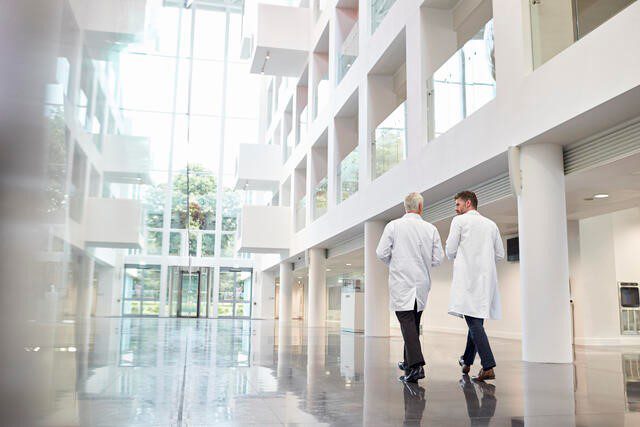The mission-critical nature of hospitals and healthcare facilities requires that stakeholders build their business continuity plans around a philosophy of high availability of services. At the physical level this implies the preparedness of electrical power, ventilation, and heating and cooling networks that support the availability of the facility, and ensure business continuity across all disciplines, and emergency recovery goals.
 As a former Director of Estates and Facilities at a large acute hospital trust in the UK, I was responsible for maintaining the resilience not only of the electrical, mechanical and IT infrastructure, but also of our supply chain and the staff members responsible for front line internal systems and support services.
As a former Director of Estates and Facilities at a large acute hospital trust in the UK, I was responsible for maintaining the resilience not only of the electrical, mechanical and IT infrastructure, but also of our supply chain and the staff members responsible for front line internal systems and support services.
Managing emergency events at hospitals and healthcare facilities requires a level of preparedness above and beyond implementing standard business continuity best practices. Below is a list of preparedness best practices that center less on technology, and more on the ability of the humans on the ground to communicate, act and maintain the resiliency of overwhelmed systems:
- More detailed and holistic up-front planning – The systems and the people working at the healthcare site all impact each other. In an emergency event, resilience of the whole system is what comes into play. What happens if we lose ventilation service? What if I lose power or another utility such as telecoms? Not only does the planning entail identification of the many potential modes of failure, but it also requires an understanding of how people will react to a failure when it occurs, and how the supply chain and utilities can respond to remain intact.
- Scalability of physical assets – In an unprecedented situation where facility capacities are stretched to the limit, existing facilities may have to be quickly retrofitted for a different purpose. When adding new, temporary accommodation within an existing building or changing the nature of the power, water and oxygen consumption rates of a particular wing (like adding ventilators to rooms where none previously operated), electrical systems that are capable of quickly scaling up in order to meet expanded energy demands will be required. Considerations that may affect this requirement could also include temporary, supplemental refrigeration to accommodate the need for increased mortuary capacity, for instance.
- Physical security becomes even more of an emphasis – During an emergency, the situation at hospital sites may be changing constantly. New issues may present themselves around how to channel and direct large volumes or infected or infectious people (as well as large groups of media and press members) through buildings, and how to control their movements. Physical security becomes much more important during these lock-down situations in order to control movement and unwanted intrusion and to limit the risk of a contagious disease spreading.
- Information access is a holistic system lynchpin – In highly fluid situations, tactical decisions rely on inputs that communicate accurate knowledge and intelligence. The quicker key decision-makers across the facility (on both the medical and physical plant sides) can access that information, the better. For example, medical gas usage (like oxygen) and power and water usage trending must be closely monitored so that experts can accurately predict what might happen next and put contingency plans into place to address the oncoming wave of new demand.
- Facilities technicians will need protection too – In addition to medical professionals, hospitals also staff teams of facilities technicians. These individuals may be asked to address ventilation or drainage issues within the hospital facility during the crisis. Many will be worried about viruses being transmitted on surfaces in ventilation ductwork or in waste removal systems. When planning for these emergency situations, a full understanding and assessment of the risks that exist and the availability of Personal Protective Equipment (PPE) is essential to these individuals.
Past experience helps to build a more resilient future
Fortunately, most emergency situations, by their very nature, are temporary. With each emergency addressed comes new learnings. Although these real-life situations reveal resiliency gaps in technologies, processes and human resources, they also help stakeholders to plan for a future with better resiliency outcomes.
Click here to learn more about how modern physical infrastructure systems can help better support hospital resilience and business continuity efforts.



